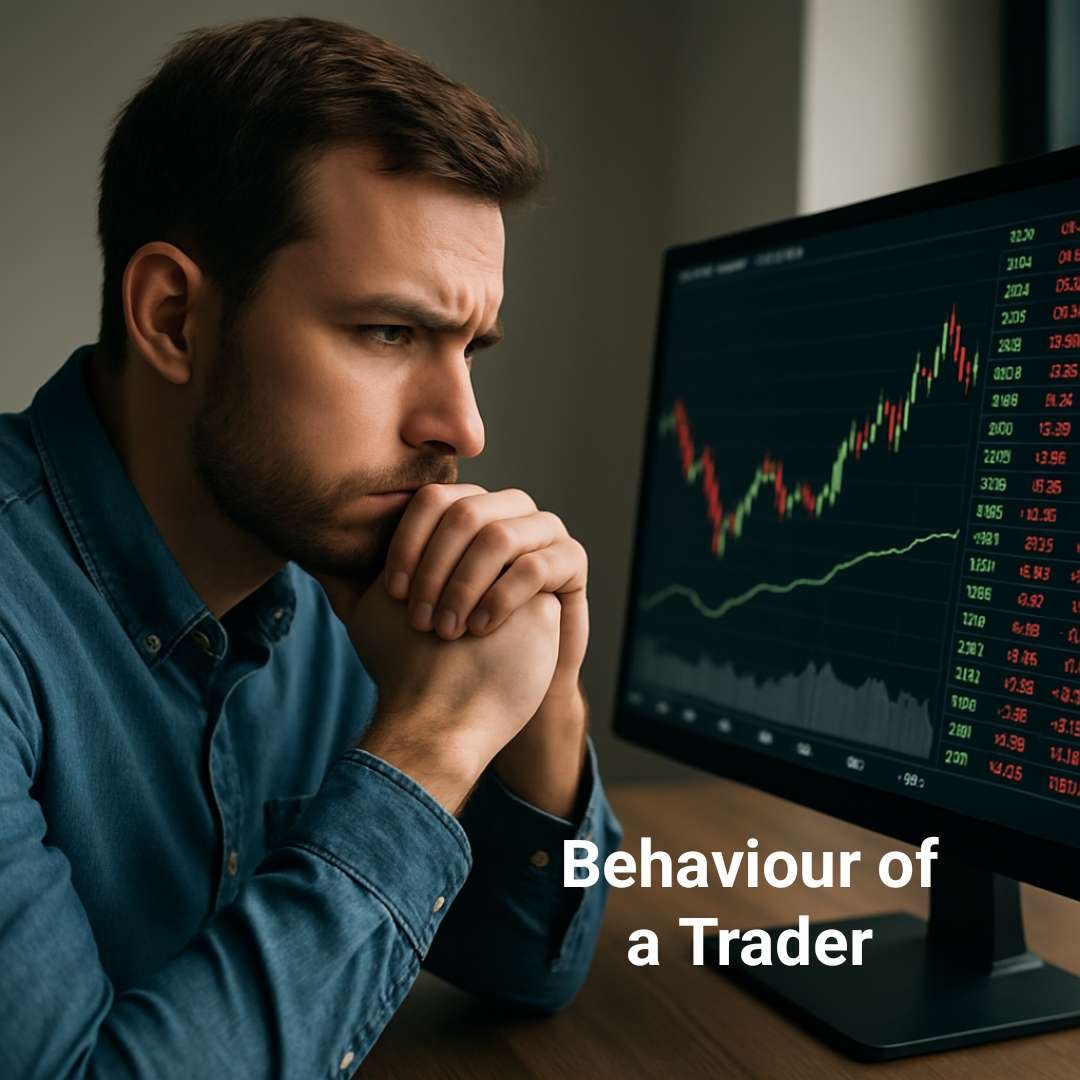Introduction
Greed and fear are the two dominant emotions that influence investor behaviour during the bull and bear phases of the stock market. In bull markets, investors become overconfident, chasing returns with little regard for the underlying fundamentals. They believe the rally will last forever. On the other hand, during bear markets, panic sets in. Even fundamentally strong stocks are dumped at cheap prices due to fear of further loss. This emotional cycle causes instability in both individual portfolios and the broader financial markets. Investors who can manage these emotions are far more likely to succeed in the long term.
The market is inefficient and People are irrational
Market inefficiency arises from the unpredictable nature of investor sentiment. Bull markets never last forever, and bear markets also pass eventually. Yet investors behave as if the current trend will continue indefinitely. This creates a trap: buying at the peak in a euphoric bull market and selling at the bottom during pessimistic bear phases. Rational investing demands that people buy low and sell high. But due to herd mentality and emotional bias, most do the exact opposite. These irrational actions are rooted in human psychology rather than sound financial logic, leading to systemic inefficiencies in the market’s pricing mechanisms.
1.Behaviour of a Trader
Individual traders often exhibit behavioural biases that sabotage their own returns. These behaviours are rarely driven by data or strategy but rather by emotion, overconfidence, or lack of self-discipline. Let’s explore five common patterns:
Excessive shuffling their portfolio
Traders often overtrade, constantly buying and selling based on short-term news, social media hype, or market rumors. This excessive shuffling leads to higher transaction costs, tax liabilities, and mental fatigue. Moreover, such activity prevents wealth from compounding over time, which is essential for long-term success. Frequent changes in portfolio allocation also break the chain of any strategic investment logic.
Holding the loss making assets
Instead of cutting their losses early, many traders continue to hold on to declining assets, hoping for a turnaround. This behaviour stems from emotional attachment, denial, or fear of accepting a loss. The refusal to implement a stop-loss or exit plan can result in a small mistake turning into a major portfolio disaster. A good investor should always follow a predefined risk management rulebook to handle such situations.
Rigid Mind
Traders who rigidly stick to their ideas even when the market data suggests otherwise set themselves up for failure. They want the market to behave in a way that confirms their beliefs, ignoring facts and trends. This cognitive rigidity limits learning, adaptation, and timely corrections. The market does not reward ego—it rewards flexibility and quick adaptation to new information.
Over optimistic
Some traders develop excessive optimism in their predictions or the advice of others, treating recommendations as guarantees. This blind faith can be extremely dangerous, especially when dealing with volatile stocks or speculative instruments. Without proper due diligence or risk assessment, such over-optimism often leads to overexposure and painful financial losses during corrections or market crashes.
Fear
Fear causes investors to make impulsive decisions, such as buying at the peak due to fear of missing out (FOMO) or selling at the bottom out of panic. These emotion-driven moves are the opposite of what should be done. Over time, this repeated pattern of fear-based decisions leads to capital erosion and destroys confidence in the market itself.
2. Effect on Market
When a large portion of market participants behave irrationally, the collective effect creates significant disruptions in market functioning. Here are five major consequences:
High volatility of Market
When too many investors enter or exit based on short-term trends, the market experiences large price swings. This makes it difficult for long-term investors to plan, and for businesses to gauge their stock’s true value. Volatility caused by irrational crowd behaviour often results in overreactions, both on the upside and downside, disrupting the market’s natural rhythm.
Over valued Market
When everyone starts buying the same trending stocks, often without understanding the company or its valuations, prices spiral upward. This herd mentality creates bubbles. Stocks trade at many times their earnings potential, and fundamentals take a backseat. Overvaluation distorts investment decisions and sets the stage for sharp corrections once reality sets in.
Market Crash
The Harshad Mehta Scam of 1992 is a classic example, where manipulated prices created a temporary boom that collapsed overnight. The Dotcom bubble saw startups with no revenue trading at astronomical valuations. In 2008, the global financial crisis was triggered by overleveraged financial products. All these crashes were preceded by irrational exuberance and followed by widespread panic selling. The behaviour of market participants was a major cause of the steep declines.
Valued stocks lose importance
During euphoric bull markets, value stocks like HDFC Bank, TCS, Infosys, and ICICI Bank often underperform simply because they aren’t giving “quick returns.” Instead, traders flock to momentum stocks like BEL, RVNL, Cochin Shipyard, or even penny stocks like Titagarh Rail and HBL Power. This skewed preference pushes solid companies into the background, distorting price discovery mechanisms in the market.
Rapid Movement of momentum stocks
Stocks such as Adani Power, IREDA, and GRSE may surge 200% in a few weeks due to aggressive buying. But when sentiment changes, these very stocks fall rapidly, wiping out profits. Many investors are caught in the trap of chasing momentum, forgetting that sharp gains often lead to equally sharp corrections. Pullbacks of 40–50% are not uncommon in such counters, especially in the absence of solid fundamentals.
3. Impact on Investors and Fund Managers
Behavioural missteps don’t just impact individual traders—they ripple across institutions. Fund managers and even seasoned investors find it hard to remain objective in a sentiment-driven market. Here are the key problems they face:
Inability to time the market correctly
Even the best analysts struggle to time entries and exits when irrational emotions dominate the market. Excessive greed creates overbought conditions, while intense fear makes markets fall below fair value. This makes prediction difficult and increases the probability of wrong decisions, especially when crowd psychology overrides logic.
All types of Analysis fails
In a highly emotional market, technical and fundamental analysis lose relevance. For example, RSI indicators showing “overbought” can keep rising for weeks in a bubble. Similarly, deeply undervalued stocks may continue to fall. It appears as if both data and patterns are lying, but it’s the emotion-led decisions that blur the effectiveness of rational analysis.
Wrong Rebalancing of portfolio
Traders may exit stable stocks for high-growth, overhyped options. This disturbs the balance between value and momentum stocks. When the market eventually corrects, portfolios heavily tilted towards riskier assets crash more violently, wiping out gains made in previous years. A well-balanced portfolio provides shock absorption—but this is often ignored.
Over Optimistic Decision
In a bull market, momentum stocks are seen as unbeatable. This overconfidence causes traders to abandon risk control. They put large sums into stocks that may lack solid business models. When a correction hits, these investments turn into heavy losses. Meanwhile, undervalued or conservative picks that could have cushioned the fall were ignored entirely.
Unnecessarily stop or Delay SIP
SIPs are designed for disciplined investing, especially in volatile markets. But due to fear, many investors pause or stop their SIPs during downturns—just when markets are offering the best buying opportunities. Conversely, during bull runs, greed makes them divert SIP money into individual hot stocks, often bought at high prices. Both actions reduce long-term returns.
4.Using Financial Decision Correctly
While no one can control or predict the market, individual investors can control their own behaviour. Following a systematic approach and building safeguards into decision-making can dramatically reduce poor investment outcomes. Here are four such methods:
Deep analysis of past decisions
Keeping a journal of every trade or investment—why it was made, what the outcome was—helps develop a learning loop. Over time, patterns emerge showing what works and what doesn’t. Reviewing this log every quarter can be far more powerful than reading stock news daily.
Creating a Checklist and sticking to it
A checklist acts like a manifesto. Before making any buy/sell decision, investors should go through their list: Is the stock fundamentally strong? Is the valuation reasonable? Am I following my asset allocation? This checklist becomes a guardrail in emotionally charged environments.
Pre planning
Anticipating market phases and preparing a response plan reduces panic during real-time events. Having pre-decided strategies for market corrections, sudden rallies, or global shocks makes an investor resilient and less reactive. This discipline enhances overall financial outcomes.
Reflection
Set aside time for structured reflection. Weekly reflections help catch small mistakes. Monthly reviews offer trend insights. Yearly reflections give a bigger picture of what kind of investor you are becoming. Writing down your reflections strengthens awareness and decision-making maturity.
Key Takeaways
- Investor emotions heavily influence stock market outcomes.
- Greed during bull runs leads to overvaluation and bubbles.
- Fear during downturns triggers panic selling and irrational decisions.
- Traders often repeat harmful behaviour due to cognitive biases.
- Market volatility and crashes are often triggered by collective emotional reactions.
- Discipline, analysis, and planning can neutralize the negative effects of emotional investing.
Conclusion
The stock market is not just a place for numbers—it is a reflection of human emotion. The cycle of greed and fear repeats every few years, creating bubbles and busts. While no one can fully avoid the market’s chaos, they can certainly avoid being part of the chaos. By understanding and improving investor behaviour, following a disciplined approach, and reflecting regularly, individuals can become successful investors regardless of market trends. The journey may not be smooth, but it will certainly be rewarding for those who learn to master their emotions.

